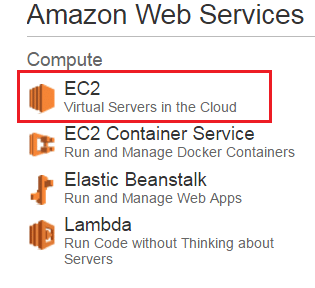
If you have received a warning that Nginx does NOT support SSL certificates, you can easily resolve the problem by installing SSL certificates. You will need to install an SSL certificate on each device and server. This article will show you how to create an SSL CSR using the DigiCert OpenSSL CSR wizard.
Warning about configuration of nginx SSL certificate
If your site uses an SSL certificate, you might receive an "nginx SSL certificate setup" warning. This message tells you that your server cannot use HTTPS. It means that your certificate doesn't match the domain name that is listed in the browser address bar. You must fix this by configuring HTTPS on your server.
This process begins with installing a SSL Certificate on your NGINX webserver. An SSL certificate can be purchased from a certificate authority. Online, you can find the contact information for a certificate authority. Once you have obtained your certificate, you can restart the server.
Installing an SSL certificate
An SSL certificate installed on your Nginx webserver will secure your website. It will also make customers feel safer. Installing the certificate requires that you first download the intermediate certificate bundle file from a repository. Once you have the files you will need to configure Nginx for the certificate. The OS platform and Nginx version will affect the configuration.

For every web server that supports HTTPS, an encrypted protocol that encrypts data transmitted between the webserver and the browser, SSL certificates must be installed on NGINX. To install a certificate on your NGINX webserver, you must first download it from the Let's Encrypt website. It should be installed on your server. You also need to enable HTTPS from the NGINX configuration.
CSR creation
There are a number of ways to create a CSR for nginx's SSL certificate configuration. CSR creation is necessary for SSL certificate configuration. This will enable you to submit a request for a new SSL certificate to the certificate authority. This certificate will allow Nginx provide HTTPS service.
The private key to the SSL certificate can be kept in the same folder as the SSL certificate. It is best to keep the certificate and the private key apart. It is also possible to limit the ciphers and protocols available in an ssl connection with nginx's ssl_protocols property.
Using the DigiCert OpenSSL CSR Wizard
In order to set up SSL certificate for Nginx the first step is to generate CSR. OpenSSL is used to create the CSR. Once you have created the CSR and saved it, you can now install the certificate onto your Nginx server. After the SSL certificate is installed, you must restart Nginx.
Once you have generated the CSR, you need to save it in a directory that contains your SSH files. Next, you need to enter the organization's name, locality, and state. You can also add a two-letter country code if desired. A passphrase or password can be used to further secure your computer. The CSR must be saved in the user directory. This directory is where you will keep your SSH keys. A backup copy of the file ".key" will be required.

Creating a private key
Setting up SSL on Nginx is easy if you have a private key. SSL must function correctly and your server should be protected against all types of vulnerabilities. While the default SSL configuration will get the job done, it may not be enough. These are steps to make your SSL configuration more secure.
First, you will need to create a private secret key for the SSL certificate that you are installing. You can generate a new one with a tool called Let's Encrypt. It is best to use certificates with a shorter expiry (for example, Let’s Encrypt certificates expire after just 90 days). You will need a new private secret key once your certificate expires. As this will limit your vulnerability to private key compromises, it is best to renew your certificate frequently.
FAQ
Is WordPress a CMS?
Yes. It's a Content Management System (CMS). CMS allows you to manage the content of your website from within a web browser, instead of using applications like Dreamweaver and Frontpage.
WordPress is free! You don't have to pay for anything other than hosting, which your ISP usually provides.
WordPress was originally created to be a blogging platform. But WordPress now offers many more options, such as eCommerce sites or forums, membership websites and portfolios.
WordPress is easy to install and set up. It is necessary to download the installation file from their site and upload it on your server. You can then visit your domain name using your web browser to log in to your new website.
After installing WordPress on your computer, you'll need a username and a password. After logging in, you will see a dashboard that allows you to access all your settings.
From here, you can add pages, posts, images, links, menus, widgets, and plugins. You may skip this step if you feel comfortable editing and creating content.
If you prefer to work with a professional web designer, you can hire them to manage the entire process.
Do I hire a web developer or make it myself?
If you don't want to spend a lot, you shouldn't hire web designers. But if you want quality results, then hiring someone else to create your website may not be worth the cost.
The truth is, there are many different ways to build websites from scratch without the need for expensive professional designers.
You can make a beautiful website if you are willing to work hard and put in the effort.
You might also consider outsourcing your project to an experienced freelance web developer who charges by the hour instead of per-project.
Do I require technical skills to design or build my website?
No. All you need to understand HTML and CSS. You can easily find tutorials online that teach both HTML and CSS.
Statistics
- At this point, it's important to note that just because a web trend is current, it doesn't mean it's necessarily right for you.48% of people cite design as the most important factor of a website, (websitebuilderexpert.com)
- It enables you to sell your music directly on your website and keep 100% of the profits. (wix.com)
- Did you know videos can boost organic search traffic to your website by 157%? (wix.com)
- When choosing your website color scheme, a general rule is to limit yourself to three shades: one primary color (60% of the mix), one secondary color (30%), and one accent color (10%). (wix.com)
- In fact, according to Color Matters, a signature color can boost brand recognition by 80%. There's a lot of psychology behind people's perception of color, so it's important to understand how it's used with your industry. (websitebuilderexpert.com)
External Links
How To
What is website hosting?
Website hosting is the place where visitors go to visit a website. There are two types.
-
Shared Hosting - This is your cheapest option. Your website files reside on a server controlled by someone else. Customers visit your website and send their requests over the Internet to this server. You then receive the request from the owner of the server.
-
Dedicated Hosting - This option is the most costly. Your website is only accessible from one server. No other websites share space on the server, so your traffic stays private.
Shared hosting is preferred by most businesses because it's cheaper than dedicated hosting. The company hosting the server will provide the resources necessary to manage your website.
Both options have their pros and cons. Here are the differences:
The pros of shared hosting:
-
Lower Cost
-
It's easy to set up
-
Frequent Updates
-
It can Be Found On Many Web Hosting Companies
Shared hosting can often cost as little as $10/month. Keep in mind, however, that bandwidth is usually included in the price. Bandwidth describes the amount of data that can be transferred over the Internet. Even if you upload only photos to your blog you might still have to pay more for large amounts of data that you transfer through your account.
Once you begin, you will soon see why you spent so much on your previous host. Many shared hosts offer very little customer support. You'll be on your way after they walk you through setting it up.
Look for a provider who offers 24/7 phone support. They'll take care of any issues that come up while you sleep.
Dedicated Hosting Cons:
-
More Expensive
-
Fewer Common
-
Requires Special Skills
With dedicated hosting, you get everything you need to run your website. You won’t need to worry whether you have enough bandwidth or enough RAM (random address memory).
This means you'll have to spend more upfront. However, once your business goes online, you'll discover that you don’t need as much technical support. You'll be able to manage your servers effectively.
Which Is Better for My Business?
It all depends on the type of website you are creating. Shared hosting is best for those who only need to sell products. It's easy to set up and maintain. It's easy to set up and maintain, as you share a server with other sites. You will likely be updated frequently.
However, dedicated hosting can be a great option if you're looking to build a community around the brand. You can put your efforts into building your brand, and not worry about how to handle your traffic.
Bluehost.com has both. They offer unlimited data transfers per month, 24/7 support and free domain registration.